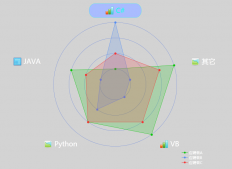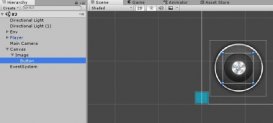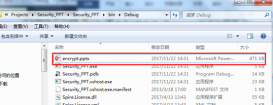本文主要记录我在学习C#中foreach遍历原理的心得体会。
对集合中的要素进行遍历是所有编码中经常涉及到的操作,因此大部分编程语言都把此过程写进了语法中,比如C#中的foreach。经常会看到下面的遍历代码:
|
1
2
3
4
5
|
var lstStr = new List<string> { "a", "b" }; foreach (var str in lstStr) { Console.WriteLine(str); } |
实际此代码的执行过程:
|
1
2
3
4
5
6
|
var lstStr = new List<string> {"a", "b"}; IEnumerator<string> enumeratorLst = lstStr.GetEnumerator(); while (enumeratorLst.MoveNext()) { Console.WriteLine(enumeratorLst.Current); } |
会发现有GetEnumerator()方法和IEnumerator<string>类型,这就涉及到可枚举类型和枚举器的概念。
为了方便理解,以下为非泛型示例:
|
1
2
3
4
5
6
7
8
9
10
11
|
// 摘要:// 公开枚举器,该枚举器支持在非泛型集合上进行简单迭代。 public interface IEnumerable { // 摘要: // 返回一个循环访问集合的枚举器。 // // 返回结果: // 可用于循环访问集合的 System.Collections.IEnumerator 对象。 IEnumerator GetEnumerator(); } |
实现了此接口的类称为可枚举类型,是可以用foreach进行遍历的标志。
方法GetEnumerator()的返回值是枚举器,可以理解为游标。
|
1
2
3
4
5
6
7
8
9
10
11
12
13
14
15
16
17
18
19
20
21
22
23
24
25
26
27
28
29
30
31
32
33
34
|
// 摘要:// 支持对非泛型集合的简单迭代。 public interface IEnumerator { // 摘要: // 获取集合中的当前元素。 // // 返回结果: // 集合中的当前元素。 // // 异常: // System.InvalidOperationException: // 枚举数定位在该集合的第一个元素之前或最后一个元素之后。 object Current { get; } // 摘要: // 将枚举数推进到集合的下一个元素。 // // 返回结果: // 如果枚举数成功地推进到下一个元素,则为 true;如果枚举数越过集合的结尾,则为 false。 // // 异常: // System.InvalidOperationException: // 在创建了枚举数后集合被修改了。 bool MoveNext(); // // 摘要: // 将枚举数设置为其初始位置,该位置位于集合中第一个元素之前。 // // 异常: // System.InvalidOperationException: // 在创建了枚举数后集合被修改了。 void Reset(); } |
以下是自定义一个迭代器的示例(https://msdn.microsoft.com/en-us/library/system.collections.ienumerator.aspx):
|
1
2
3
4
5
6
7
8
9
10
11
12
13
14
15
16
17
18
19
20
21
22
23
24
25
26
27
28
29
30
31
32
33
34
35
36
37
38
39
40
41
42
43
44
45
46
47
48
49
50
51
52
53
54
55
56
57
58
59
60
61
62
63
64
65
66
67
68
69
70
71
72
73
74
75
76
77
78
79
80
81
82
83
84
85
86
87
88
89
90
91
92
93
94
95
96
97
98
99
100
101
102
103
104
105
106
107
108
109
110
111
112
113
114
115
116
117
118
|
using System;using System.Collections;// Simple business object.public class Person{ public Person(string fName, string lName) { this.firstName = fName; this.lastName = lName; } public string firstName; public string lastName;}// Collection of Person objects. This class// implements IEnumerable so that it can be used// with ForEach syntax.public class People : IEnumerable{ private Person[] _people; public People(Person[] pArray) { _people = new Person[pArray.Length]; for (int i = 0; i < pArray.Length; i++) { _people[i] = pArray[i]; } }// Implementation for the GetEnumerator method. IEnumerator IEnumerable.GetEnumerator() { return (IEnumerator) GetEnumerator(); } public PeopleEnum GetEnumerator() { return new PeopleEnum(_people); }}// When you implement IEnumerable, you must also implement IEnumerator.public class PeopleEnum : IEnumerator{ public Person[] _people; // Enumerators are positioned before the first element // until the first MoveNext() call. int position = -1; public PeopleEnum(Person[] list) { _people = list; } public bool MoveNext() { position++; return (position < _people.Length); } public void Reset() { position = -1; } object IEnumerator.Current { get { return Current; } } public Person Current { get { try { return _people[position]; } catch (IndexOutOfRangeException) { throw new InvalidOperationException(); } } }}class App{ static void Main() { Person[] peopleArray = new Person[3] { new Person("John", "Smith"), new Person("Jim", "Johnson"), new Person("Sue", "Rabon"), }; People peopleList = new People(peopleArray); foreach (Person p in peopleList) Console.WriteLine(p.firstName + " " + p.lastName); }}/* This code produces output similar to the following: * * John Smith * Jim Johnson * Sue Rabon * */ |
在有了yield这个关键字以后,我们可以通过这样的方式来创建枚举器:
|
1
2
3
4
5
6
7
8
9
10
11
12
13
14
15
16
17
18
19
20
21
22
23
24
25
26
27
28
29
30
31
32
33
34
35
36
37
38
39
40
41
42
43
44
45
46
47
48
49
50
51
52
53
54
55
56
57
58
59
60
61
|
using System;using System.Collections;// Simple business object.public class Person{ public Person(string fName, string lName) { this.firstName = fName; this.lastName = lName; } public string firstName; public string lastName;}// Collection of Person objects. This class// implements IEnumerable so that it can be used// with ForEach syntax.public class People : IEnumerable{ private Person[] _people; public People(Person[] pArray) { _people = new Person[pArray.Length]; for (int i = 0; i < pArray.Length; i++) { _people[i] = pArray[i]; } } // Implementation for the GetEnumerator method. IEnumerator IEnumerable.GetEnumerator() { for (int i = 0; i < _people.Length; i++) { yield return _people[i]; } }}class App{ static void Main() { Person[] peopleArray = new Person[3] { new Person("John", "Smith"), new Person("Jim", "Johnson"), new Person("Sue", "Rabon"), }; People peopleList = new People(peopleArray); foreach (Person p in peopleList) Console.WriteLine(p.firstName + " " + p.lastName); }} |
以上就是本文的全部内容,希望对大家的学习有所帮助,也希望大家多多支持服务器之家。
原文链接:http://www.cnblogs.com/alongdada/archive/2017/09/26/7598119.html


















